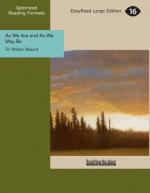’Thus we by want, more than by having,
learn
The worth of things in which we claim
concern.’
On that of William Cutting, a benefactor to Gonville and Caius, Cambridge, is written:
’Not dead, if good deedes could
keep men alive,
Nor all dead since good deedes do men
revive.
Gunville and Kaies his good deedes maie
record,
And will (no doubt) him praise therefor
afford.’
On the tablet of Charles Stamford, clergyman:
’Mille modis morimur mortaies, nascimur
uno:
Sunt hominum morbi milie sed una salus.’
And to the memory of Robert Beadles, free-mason, one of His Majesty’s gunners of the Tower, who died in the year 1683:
’He now rests quiet, in his grave
secure;
Where still the noise of guns he can endure;
His martial soul is doubtless now at rest,
Who in his lifetime was so oft oppressed
With care and fears, and strange cross
acts of late,
But now is happy and in glorious state.
The blustering storm of life with him
is o’er,
And he is landed on that happy shore
Where ‘tis that he can hope and
fear no more.’
There they lay buried, the good people of St. Katherine’s Precinct. They were of all trades, but chiefly belonged to those who go down to the sea in ships. On the list of names are those of half a dozen captains, one of them captain of H.M.S. Monmouth, who died in the year 1706, aged 31 years; there are the names of Lieutenants; there are those of sailmakers and gunners; there is a sergeant of Admiralty, a moneyer of the Tower, a weaver, a citizen and stationer, a Dutchman who fell overboard and was drowned, a surveyor and collector—all the trades and callings that would gather together in this little riverside district separated and cut off from the rest of London. Among the people who lived here were the descendants of them who came away with the English on the taking of Calais, Guisnes, and Hames. They settled in a street called Hames and Guisnes Lane, corrupted into Hangman’s Gains. A census taken in the reign of Queen Elizabeth showed that of those resident in the Precinct, 328 were Dutch, 8 were Danes, 5 were Polanders, 69 Were French—all hat-makers—2 Spanish, 1 Italian, and 12 Scotch. Verstegan, the antiquary, was born here, and here lived Raymond Lully. During the last century the Precinct cane to be inhabited almost entirely by sailors, belonging to every nation and every religion under the sun.




